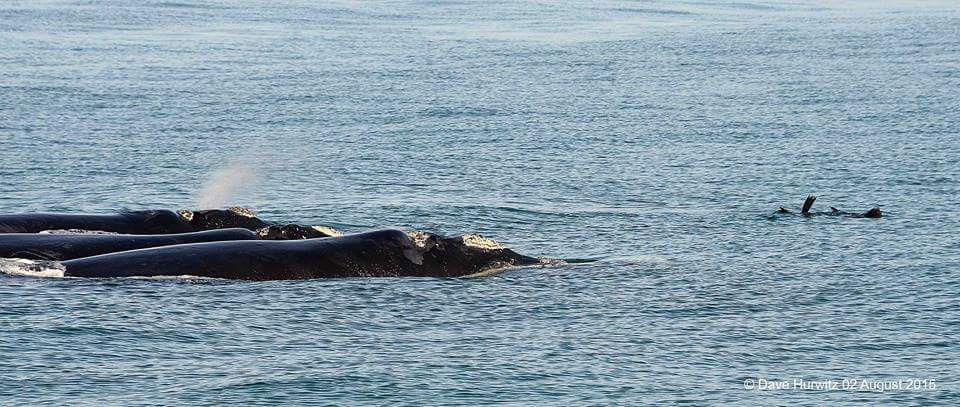You know spring is around the corner when the whales come out to play in False Bay. They say whale season is from August to November and it was Saturday 1st August 2015, when perched high on Elsie’s Peak that I spotted the familiar sight of a spray of water coming out of a Southern Right spout. The view from Elsie’s Peak is nothing less than spectacular…but you won’t see the whale in this photo.
 Photographer Dave Hurwitz captured this priceless photo of three Southern Right whales frolicking in False Bay with a seal for company…this was yesterday…
Photographer Dave Hurwitz captured this priceless photo of three Southern Right whales frolicking in False Bay with a seal for company…this was yesterday…
These three were not the first to be seen. On Friday, the last day of July, a Southern Right was spotted with her calf in tow…
According to the Simons Town Boat Company FB page, at birth, a Southern Right calf is 4-6 metres in length & weighs 1.5 tonnes. Mom on the other hand is about 16 metres in length & weighs 60 tonnes.
Not an animal you want to accidentally bump into. That was the experience of a young 13 year old who, yesterday morning, while out paddle-skiing found herself being lifted by one of these wonderful mammals of the sea. She screamed and in order to not capsize, balanced her paddle-ski by leaning her paddle on the back of the whale. That being done, it disappeared beneath her. What an experience! No harm done, but certainly memorable.
According to hermanus.co.za, there are only about 3000 Southern Right whales left in the world. Hopefully, with them now being a protected species and a ban on hunting, their numbers will begin to grow.
The reason for their name, legend has it, that in days gone by they were seen as the ‘right’ whales to hunt. They were slow and visible. Found in the Southern Hemisphere, they became known as the Southern Right whales.
They live about 50 years and a pregnancy lasts nearly a year. Their diet consists mainly of krill, plankton and other tiny crustaceans.
Their primary habitat is in the Antarctic region in colder waters. When the weather cools, they move closer to the equator to mate and give birth, hence their arrival at our waters. They are also found in the oceans around South America as well as Australia and New Zealand.
We are so privileged to live in such a fabulous part of the world.
Genesis 1:21
So God created the great sea creatures and every living creature that moves, with which the waters swarm, according to their kinds, and every winged bird according to its kind. And God saw that it was good.
And we get to enjoy it.
Keep the smile going.
God bless you!
In His Grip,
Helga xx 🙂


